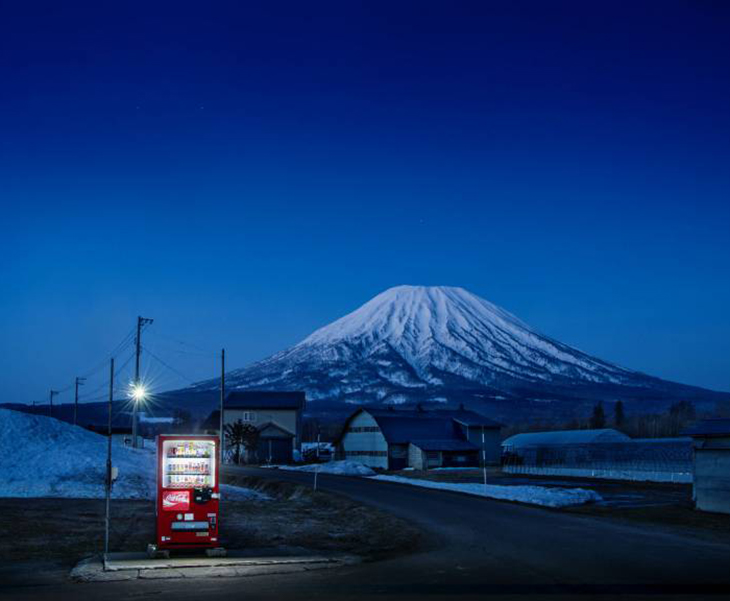
In Japan, there is one vending machine for every 23 people. So should you find yourself driving down a lonely road, like the one above, and in need of a snack, never fear, a vending machine will probably be there.
Now take this real-world image and apply it to television. In the not-too-distant past, TV stations were much like the above lone vending machine—they had little to no competition, making marketing their wares (local newscasts, programming and the like) a relatively straightforward proposition.
Drop that vending machine into the middle of Las Vegas, and you have a closer analogy to the marketing environment TV stations face today. When someone wants a snack, there are hundreds of options from which to choose, all within arms’ length. How do you get someone to choose your little vending machine?
“Welcome to the attention economy where time is money. And your audience is more discriminating than ever,” said Mark Briggs, vice president, digital strategy and innovation at Smith Geiger at Promax Station Summit in Las Vegas on Thursday. “TV is becoming bigger and better—it’s everywhere all the time—and innovation in TV and video moving at a rapid pace.”
For TV station marketers, those facts present the oft-discussed challenges and their flip side, opportunities.
“The challenge is to not just make more content but to strategically make more of your content,” said Briggs.
Briggs laid out three ways in which the TV environment is changing, and how TV stations can take advantage of that change.
First, linear TV still commands significant reach, but daily frequency is being driven by digital platforms. In order for TV stations to expand their daily viewership, they need to focus on growing their digital reach.
Second, the habit of regular TV watching has shifted to situational watching. As a result, TV stations need to complement their ownership of breaking news to winning the day, independent of the news cycle. In addition, breaking news must be broken on digital platforms as it is happening, never held for a newscast.
And third, TV stations need to leverage trust into brand allegiance, shifting the way viewers see them from just being a commodity into brands to which they are loyal. This requires effective linear and digital branding in a fragmented TV and entertainment environment.
“The challenge is to not just make more content but to strategically make more of your content,” said Briggs.
While change is a constant, a Smith Geiger study conducted last February among some 800 respondents aged 18-54 found that local TV news remains TV’s most-watched live content, even surpassing live sports, and it’s far more trusted by viewers than national news.
“The only thing consumers reported they would miss more than local news if it went away is Netflix. Local news is so relevant that we’re only behind Netflix,” Briggs said.
And head-to-head against national news sources, local newscasts are three times more trusted, although that number drops to two times among young adults 18-24 and climbs to four times among adults 45-54.
With the value of local news still strong, it’s up to marketers to capitalize on that to keep their stations top of mind in the overall television conversation. Briggs had the following recommendations to do that:
“Reassess your brand value and brand position and where it fits into the attention economy,” he said. “What is your brand today in a fragmented, disrupted world that is constantly changing? How does it play? Where does it fit in the attention economy?”
Next, “prioritize trust and authenticity” because these are values your viewers prioritize. “Is the marketing message you’re sending leveraging the trust that audiences already have in your brand?” Briggs asked. “Think about how you talk to that friend that you really trust and talk to your viewers like that.”
Continuing with that idea, “authenticity is the number-one thing people look for in their content. People want to see how the sausage is made—they want to see real people doing real work they believe in. We have to test our brands in our messaging and marketing against that frame of authenticity every time we do something.“
“Definitely tell a story that connects to a targeted audience,” Briggs said. “Think about the people or even just the one person to whom you are trying to tell that story. We live in a world of niche media. Who is the target for your next message?”
Finally, TV marketers serve the most demanding audience that’s ever existed. “We live in a world of control and convenience, which means people expect to get what they want. You have to market to them accordingly.”
[Cube image courtesy of Memoryscape]













































__twocolumncontent.jpg)











